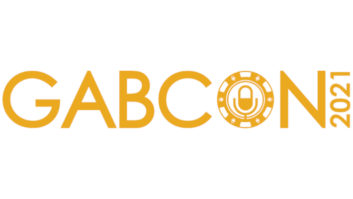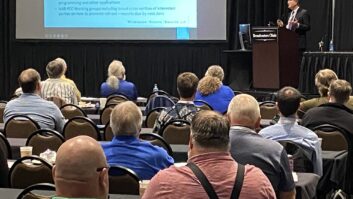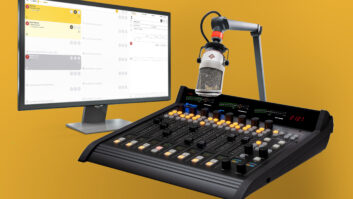SCA Primer for Broadcasters (2002 edition)
Oct 15, 2002 12:00 PM, Lyle Henry, CPBE
There has been a huge drop in interest in leasing SCA space in thelast couple of years. The prices that a station can get are thereforealso down.
Foreign language broadcasters are still interested in SCA services fromtime to time, but those who previously used SCAs the most have beenable to lease or buy AM or FM stations. In Los Angeles, Chinese,Vietnamese, Korean and Persian broadcasts are heard on stations. WhileSpanish broadcasts have never used SCA in Los Angeles, markets wherethere is not a large Hispanic presence may be candidates for leasing anSCA, as would other minority groups.
Several SCA data applications have been introduced, but most havefailed. Seiko’s Message Watch service is defunct, and Clariti’s digitalVOCA Wireless Messaging failed, among others.
Paging never worked that well on SCA because of the tiny antennas thathad to be used in the pagers, the RF noise created by the digitalelectronics right next to the antenna, and the serious effects ofmultipath on digital SCA transmission causing packet loss as peoplemoved about.
Some services, such as Muzak, have gone to satellite delivery. CommandAudio (a digital service) also changed its delivery from SCA tosatellite.
All that being said, here are my suggestions for optimal SCA channelusage:
1. Use the 92kHz subcarrier for analog services and 67kHz fordigital services. 57kHz, used for RBDS, is close enough to 67kHz to beannoying in analog receivers. Digital signals on 57 and 67 coexistnicely.
2. Give SCA clients the injection they need to do the job.You’ll just lose them if it doesn’t work well. Ten percent is normaland generally necessary, particularly for analog. Remember that astation can increase its modulation 0.5 percent for every one percentused by SCA services. There’s no point in limiting them to eightpercent (a 20 percent drop for them) when it’s only an undetectable onepercent for the station. There is also no need to save injection forRBDS. Because it is phase-locked to the pilot, it does not really addto a station’s modulation unless the injection is set to a levelconsiderably higher than is needed. Typically, 0.5 percent to onepercent should be fine.
3. Run analog SCAs at 6kHz deviation on 67kHz and 7kHz deviationon 92kHz. A higher deviation will reduce the chance that it will beheard as a birdie (whistle) in the station’s main channel in areas ofmultipath. Most car radios blend to mono where there is multipathanyway, so this is not much of an issue nowadays and does not happen onmono stations. Even in stereo, it’s almost a non-issue when an analogservice is on 92kHz. Stories of SCA birdies mostly come from years ago,are related to 67kHz, and were sometimes caused or aggravated bytransmitter mistuning.
4. Stations should own the analog SCA generators or ensure thatthe clients use high quality generators such as the CRL SCA-300B or theModulation Sciences Sidekick. These units have peak limiters built in.The CRL needs an AGC in front of it, typically at the client’s studioend. Other SCA generators can be used if a good peak limiter is placedin front of them. It should be set to 150uS pre-emphasis and the audioinput should be band-limited to 5kHz. Modified Moseley TFL-280 peaklimiters work well.
5. Be aware of the ‘sound’ of the digital stream that a digitalSCA client will use if the main channel is in stereo, runs light audioprocessing and has multipath problems. The best digital data streamsounds like white noise, but there are some that are raucous. RBDSitself is noisy. When the data stream is essentially white noise, it isunnoticeable in multipath conditions.
6. Have an accurate SCA monitor at your transmitter and anotherone at your studio. A good directional antenna is required at thestudio or inaccurate readings will be shown; typically higher thanreality. The receive-only Scala log-periodic and the Radio Shacksix-element antennas are good choices. The latest Belar monitors aredigitally based and accurate. Do not depend on older SCA monitors toset digital injection. I have never seen one read correctly.
7. Use a decent SCA radio to listen to the quality of thesignal, particularly for analog services. Have one of the client’sradios, too. One of the most common client complaints is cross-talkfrom the main channel. The audio output from the SCA modulation monitormay not be the best source to listen to because it may not beband-limited. High frequency cross-talk from the main channel that isnot audible on normal SCA radios will be heard.
8. Keep the transmitter’s AM noise low, but even more important,keep the group delay through the transmitter to a minimum. This ismainly an issue with tube-type transmitters. The input and IPA tuningwill have the most effect. Poor group delay can destroy a digital SCAand increase cross-talk on digital and analog SCAs. The effect of poorgroup delay on the main channel may be barely noticeable (if it’snoticed at all), but it will affect stereo separation.
If a high-speed digital SCA tenant installs equipment at thetransmitter that can show raw data errors, tune the transmitter forminimum errors and the group delay will be right.
You can also tune for minimum group delay by removing all modulationfrom the transmitter. Disconnect the stereo and SCA generators, too.Use a low-distortion audio oscillator and set it to exactly 9.5kHz.Connect it to the composite input and modulate the transmitter to about100 percent. Use the station’s stereo monitor to monitor pilotinjection. Tune the transmitter for minimum indicated pilot, which isthe second harmonic of your audio oscillator.
9. Be aware that the maximum total SCA injection is 30 percentfor mono FM stations and 20 percent for stereo stations. The limitabove 75kHz is 10 percent, so while a station can operate a 57kHz or67kHz SCA at 20 percent on a stereo station, a 92kHz SCA can operate atno more than 10 percent. Incidentally, a 39kHz or 41kHz SCA at 30percent will provide a phenomenal signal with excellent coverage on amono station.
10. Note that some older composite STL receivers have an 85kHzlow-pass filter and will not pass 92kHz. For 92kHz, be sure that a110kHz low-pass filter is installed. Older units can be modified, ofcourse. It is normally preferable to inject SCAs at the transmitter tokeep cross-talk to a minimum. Many clients will not want to be at themercy of a station’s STL if it fails.
Henry, The Radio Doctor, is an SCA consultant and contract engineerfor stations in Brazil, China, Taiwan and Southeast Asia. He is basedin Los Angeles.












